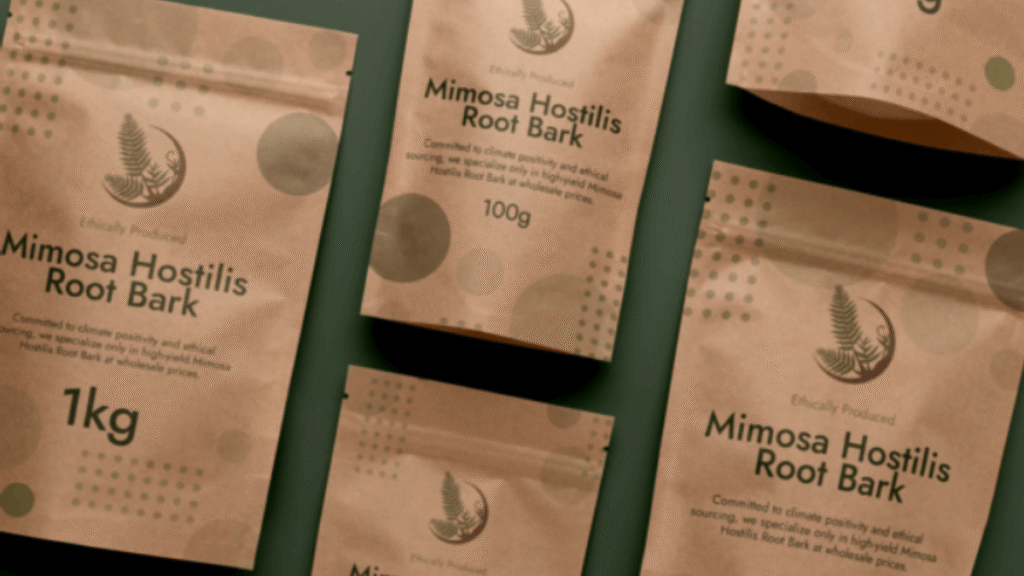Mimosa Hostilis Root Bark, often abbreviated as MHRB, is a powerful botanical with a rich history, unique properties, and a wide range of traditional and modern applications. While it has long been known in indigenous cultures of South and Central America, MHRB is now gaining popularity across the globe, particularly in natural healing, dye production, and spiritual practices.
One of the leading suppliers of MHRB today is Mimosa Hostilis Shop, a business that specializes in ethically sourced, high-quality root bark. In this article, we will dive deep into the world of MHRB, exploring its history, properties, uses, sustainability concerns, and the role of suppliers like Mimosa Hostilis Shop in meeting global demand.
What is MHRB?
MHRB stands for Mimosa Hostilis Root Bark, specifically the inner bark harvested from the roots of the Mimosa hostilis tree, also known by its scientific synonym Mimosa tenuiflora. Native to Brazil, Mexico, and parts of Central America, the tree has played an essential role in traditional medicine, ritualistic ceremonies, and natural dyeing.
The root bark contains a wide variety of bioactive compounds such as tannins, saponins, flavonoids, and trace alkaloids. Its unique chemical makeup makes it useful for medicinal, cosmetic, and artisan purposes.
Traditional Uses and Cultural Significance
In indigenous Brazilian and Mexican communities, Mimosa hostilis has long been revered for its therapeutic properties. Known locally as “jurema preta” or “tepezcohuite,” the inner root bark is used in traditional remedies to treat burns, wounds, and skin infections.
In spiritual contexts, it has been used as part of sacred rituals. Indigenous tribes have employed the bark in ceremonial brews or incense as part of their cultural heritage. These uses reflect a deep-rooted respect for the plant and its healing potential.
Chemical Composition and Properties
The potency of MHRB lies in its chemical composition:
- Tannins: Natural astringents that promote healing by forming protective layers on wounds and helping close them.
- Flavonoids: Antioxidants that reduce inflammation and fight free radicals.
- Saponins: Known for their cleansing and antimicrobial properties.
- Trace Alkaloids: Compounds that may contribute to the bark’s psychoactive reputation in certain cultural or spiritual practices.
These compounds combine to give MHRB powerful anti-inflammatory, antimicrobial, and regenerative properties. As a result, the bark is increasingly used in skincare, especially for treating burns and scars.
Modern Applications of MHRB
Today, MHRB is used in a range of industries, including:
1. Natural Dyes
Artisans and textile workers prize MHRB for the beautiful reddish-purple and brown hues it can produce on natural fabrics. The dye is extracted using boiling water or solvents, and the results vary depending on fabric type and mordant used.
2. Skincare and Cosmetics
Due to its healing properties, MHRB is often included in natural skincare formulations. Tepezcohuite creams, powders, and lotions are used to treat acne, eczema, burns, and scarring.
3. Ethnobotanical and Research Uses
In the field of ethnobotany and natural product chemistry, MHRB is a subject of interest for its unique chemical structure. While some people explore its psychoactive properties in controlled, academic contexts, such use must always be approached with caution due to varying legal and ethical considerations.
Sustainable Harvesting and Environmental Impact
Because MHRB is harvested from the root bark, there are legitimate concerns about sustainability and the potential ecological impact of overharvesting. Unlike leaves or outer bark, removing inner root bark can damage or kill the tree if done irresponsibly.
To address this, ethical suppliers are now turning toward sustainable harvesting practices, including:
- Harvesting only mature trees in specific intervals.
- Replanting trees to replace those harvested.
- Encouraging local stewardship and fair trade practices with native communities.
These practices are crucial to maintaining biodiversity and preserving this valuable resource for future generations.
The Rise of Mimosa Hostilis Shop
As global interest in MHRB has surged, a number of online vendors have emerged. Among them, Mimosa Hostilis Shop stands out as a reputable and ethical supplier that focuses on quality, sustainability, and transparency.
What Makes Mimosa Hostilis Shop Unique?
- Premium Quality Control
The bark sold by the shop undergoes careful selection and testing to ensure purity and potency. Products are offered in various forms—whole bark, shredded, or powdered—catering to different user preferences. - Sustainable and Ethical Sourcing
The shop claims to follow environmentally friendly harvesting techniques. This includes selective root harvesting and planting new trees to offset their ecological footprint. - Global Shipping and Accessibility
Mimosa Hostilis Shop provides international shipping, making MHRB accessible to researchers, artists, and health enthusiasts worldwide. They also offer detailed guides on how to use the product responsibly. - Educational Resources
Beyond selling products, the shop educates its customers about safe handling, traditional uses, and the importance of sustainability.
Legal and Ethical Considerations
Legality of MHRB
The legal status of MHRB varies significantly from one country to another. While the plant itself is often legal, certain compounds within the bark (such as trace alkaloids) may be restricted or regulated in some jurisdictions.
Users must be aware of their local laws regarding possession, importation, or use of MHRB, especially if the intention is to conduct chemical extractions or spiritual practices involving ingestion or inhalation.
Ethical Usage
Even where legal, the ethical implications of using MHRB—especially for spiritual or recreational purposes—deserve careful thought. It’s important to respect the plant’s cultural significance and not exploit traditional knowledge for commercial or personal gain without understanding the context.
Challenges in the MHRB Market
As demand rises, so do challenges:
- Adulteration and Fake Products: Some vendors may sell counterfeit or low-quality root bark mixed with fillers.
- Overharvesting: Without proper regulations, large-scale harvesting could threaten Mimosa hostilis populations.
- Misinformation: Misleading claims about the product’s effects can create unrealistic expectations or unsafe use.
This is why sourcing from a reputable, transparent supplier like Mimosa Hostilis Shop is vital for those who are serious about quality and ethics.
Conclusion
MHRB is a plant material with an incredible legacy. From indigenous medicine to modern skincare and textile arts, the bark of Mimosa hostilis continues to make its mark in diverse fields. Its healing properties, natural beauty, and cultural significance make it a botanical treasure worth protecting.
However, the growing popularity of MHRB brings responsibilities. It’s crucial to ensure that harvesting is done ethically, legal considerations are respected, and cultural traditions are honored.
Suppliers like Mimosa Hostilis Shop play an important role in making high-quality MHRB accessible while promoting sustainability and education. As with all powerful natural substances, the key lies in respectful, informed, and responsible use.







